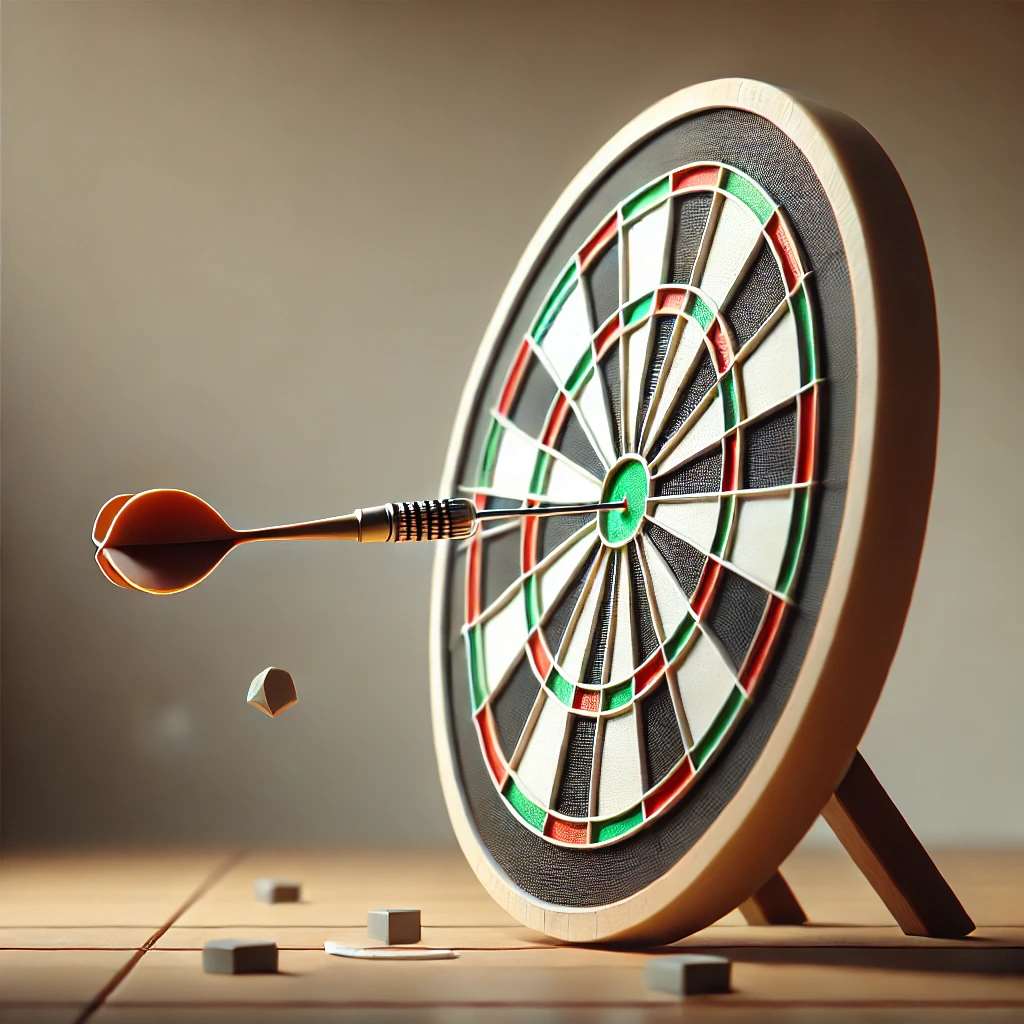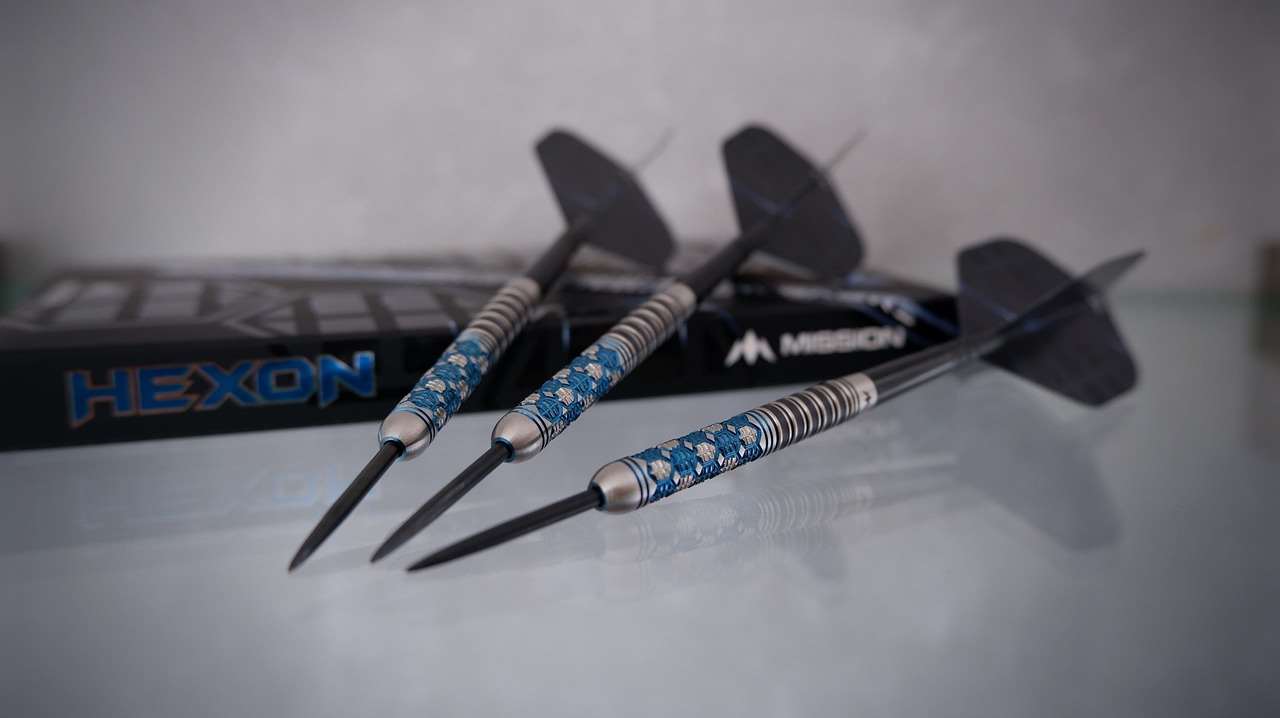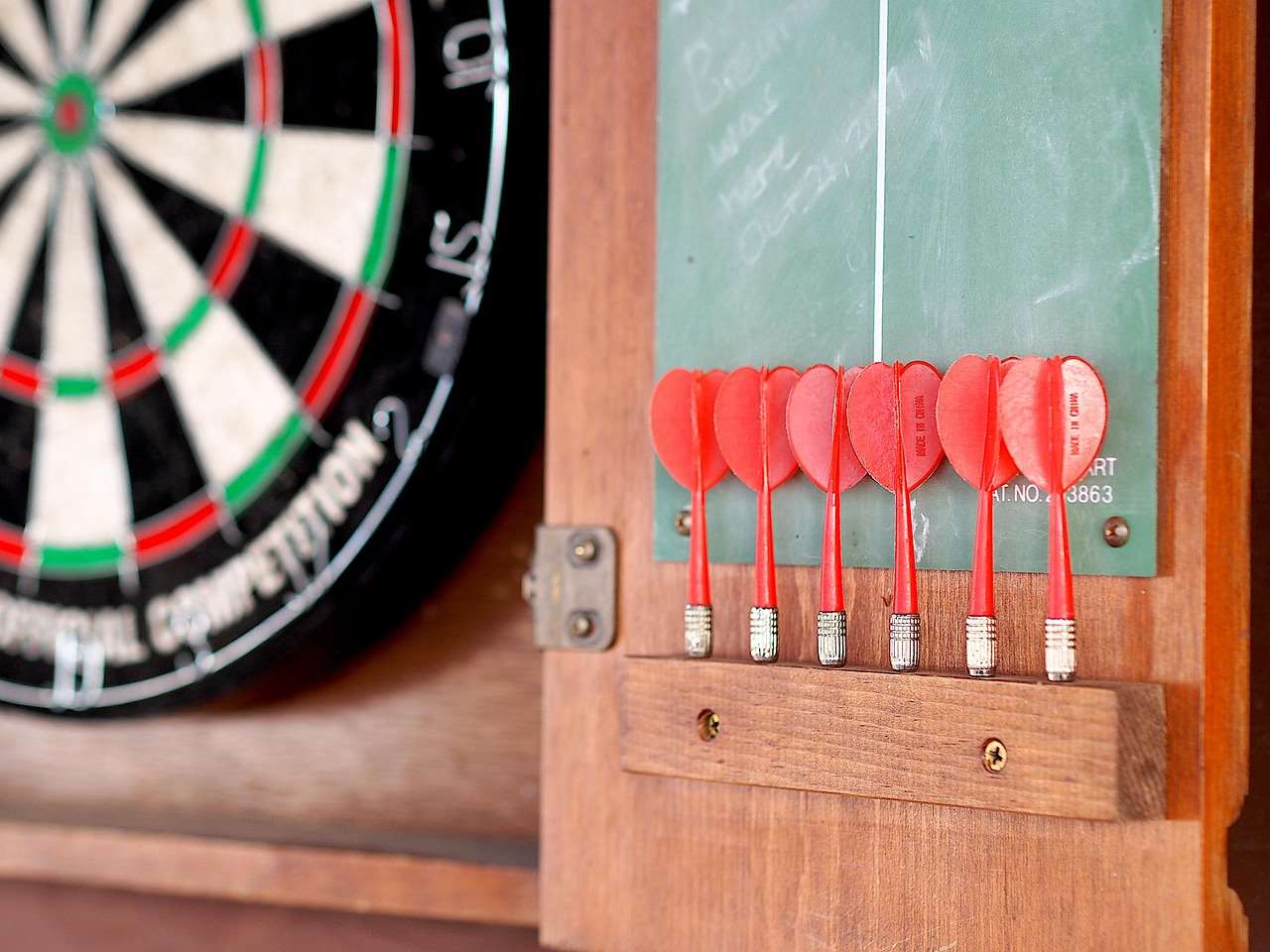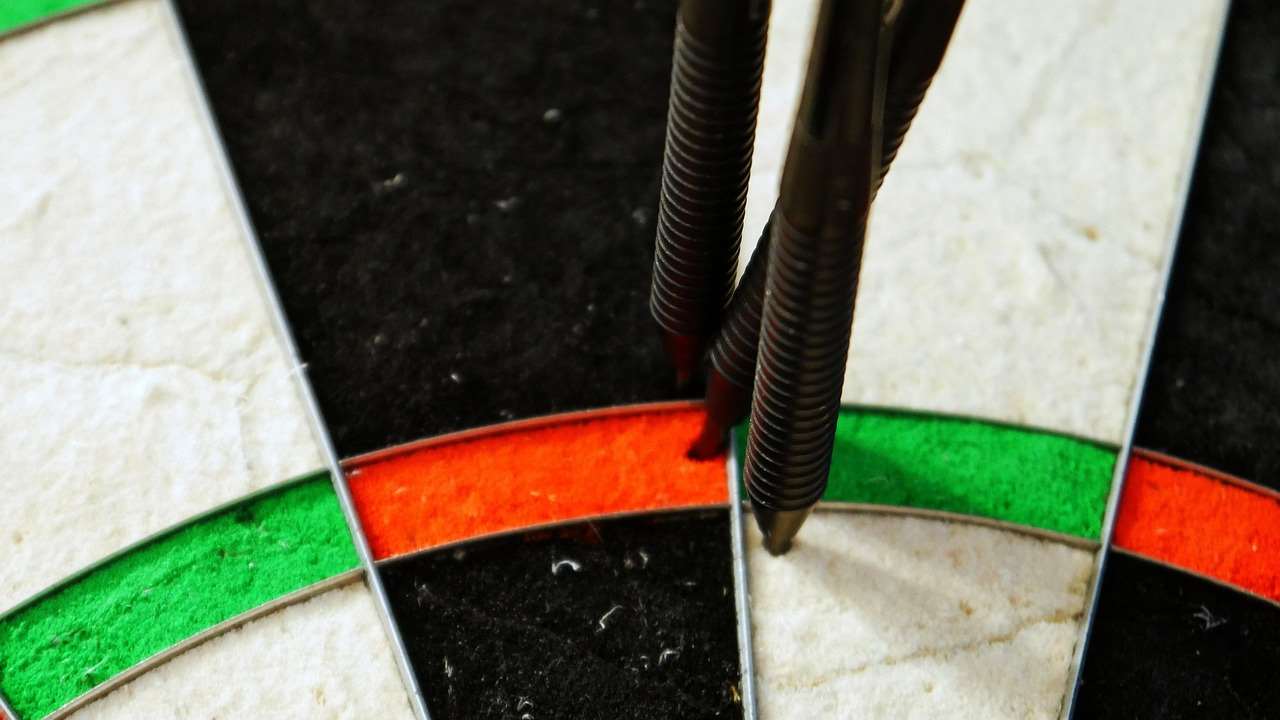The decision to repair or replace dart barrels hinges on the extent of the damage and your skill level. Minor cosmetic issues can often be addressed with repair, while significant bends, cracks, or wear necessitates replacement. This article will guide you through evaluating your dart barrels, understanding when repair is feasible, and when it’s best to invest in new ones. We’ll also explore various repair techniques and considerations for choosing replacement barrels.
⚠️ Still Using Pen & Paper (or a Chalkboard)?! ⚠️
Step into the future! The Dart Counter App handles all the scoring, suggests checkouts, and tracks your stats automatically. It's easier than you think!
Try the Smart Dart Counter App FREE!Ready for an upgrade? Click above!
Let’s start by examining the condition of your dart barrels. A thorough inspection is crucial in deciding whether to repair or replace dart barrels. Look closely for any bending, cracks, deep scratches, or significant wear on the barrel’s surface. These issues can directly affect your throw’s accuracy and consistency. Sometimes, a simple cleaning might suffice, but other times, more extensive action is needed.
Repair or Replace Dart Barrels: Assessing the Damage
Before diving into repair solutions, a systematic assessment of your dart barrels is essential. This involves a careful visual inspection and a feel test. Look for obvious signs of damage such as bends, cracks, or deep gouges. Then, hold the barrel and carefully feel for any inconsistencies in its shape or surface. Even minor imperfections can impact your game. Consider if the damage affects your grip, balance, or flight path.

Minor cosmetic imperfections, such as small scratches or scuff marks, are usually cosmetic and don’t necessarily impact performance. However, if you’re aiming for the best possible results, even these minor issues can be addressed through refinishing or repainting, described in the following sections. But significant bends or cracks will almost certainly mean your dart barrels are beyond repair. For these, replacement is the only reliable option.
Identifying Repairable Damage
Some damage to your dart barrels can be successfully repaired. This typically includes minor scratches and superficial abrasions. If the barrel’s structure remains intact and the damage doesn’t compromise your grip, balance or flight path, repair might be a viable option. This often involves techniques like careful sanding, refinishing, or repainting. Before you begin any repair process, make sure to consider the cost and effort involved compared to the price of new dart barrels. Sometimes, replacement is simply the more efficient option.
Irreparable Damage: When Replacement is Necessary
If your dart barrels exhibit significant structural damage, such as deep cracks, major bends, or warping, then replacement is generally the best course of action. Attempting to repair this type of damage often introduces new problems or compromises the integrity of the barrel which can lead to injuries. Repair or replace dart barrels – the decision depends on the damage.

Damaged barrels will affect your game’s consistency and accuracy. Trying to use a damaged barrel is similar to using a bent golf club or a cracked tennis racket; it simply won’t work correctly, leading to frustration and poor performance. Furthermore, using a damaged barrel can even lead to injury due to unpredictable flight paths and potentially imbalanced weight distribution. Replacing your damaged barrels is the easiest route to better play, and ensuring safety.
Repair Techniques for Dart Barrels
While replacing your dart barrels is often the simpler solution, repairing minor damage can be a satisfying project for the DIY enthusiast. However, remember that successful repair depends heavily on the type and extent of the damage. Repairing a deep gouge in your barrel may prove more challenging than simply replacing it.
Sanding and Refinishing
For minor scratches and scuff marks, careful sanding followed by polishing can restore your dart barrels to their former glory. Start with fine-grit sandpaper to avoid damaging the barrel’s surface. Gradually increase the grit as the scratches diminish. After sanding, gently polish the surface to achieve a smooth finish. This process is suitable for metal barrels. However, always remember that improper sanding can remove significant material and potentially weaken the barrel. For intricate metalwork or delicate designs, consider seeking help from a professional.
Repainting
If the damage is primarily cosmetic and involves fading or chipping paint, repainting can revive your dart barrels. Use a paint specially formulated for metal surfaces to ensure adequate adhesion and durability. This could also be an opportunity to customize dart shaft material and create a truly unique set. Apply thin coats to prevent drips or runs, and allow sufficient drying time between coats. For a professional-looking finish, consider using a clear coat sealant for added protection and gloss. When repainting, choose a color that you feel will improve the overall aesthetic and even aid your grip. Some players find certain colors to be less distracting during their throw.
Remember, the repainting process is mostly cosmetic. It addresses surface-level issues and won’t correct underlying structural problems that affect the barrel’s weight, balance, or overall integrity.
Choosing Replacement Dart Barrels
When the damage is too extensive for repair, replacing your dart barrels is the best course of action. Consider these factors when selecting new ones. The weight, material, and overall design of your dart barrels significantly impact your throw and performance. This is often overlooked. Your throwing style may have changed over time, and what worked perfectly before might now feel slightly wrong.
Weight Considerations
The weight of your dart barrels is a crucial factor affecting your throwing style and accuracy. Experiment with different weights to find the one that best suits your individual technique and preference. Lighter barrels generally offer quicker release and faster flights, while heavier barrels provide more stability and momentum. Selecting the correct weight is a personal choice and should consider your ability and throwing technique.
Material Selection
Dart barrels are made from various materials, each offering unique properties. Brass, tungsten, and nickel-silver are common choices. Tungsten offers high density in a smaller size, allowing for better weight-to-size ratios. Brass is known for its durability and feel. The dart repointing trends are often reflected in material selections too.

Consider the type of game you play. Soft-tip darts often use nickel-silver barrels, while steel-tip darts are often made from brass or tungsten. Selecting the right material is crucial for overall performance and longevity of your dart barrels, impacting whether you need to repair or replace dart barrels in the near future.
Barrel Design and Grip
The design and grip of the dart barrel are crucial considerations. The shape and texture of the barrel should fit your hand comfortably and provide a secure grip, minimizing slippage during your throw. Consider different barrel designs (straight, torpedos, etc.) and grip textures (rings, knurling, etc.) to find what best enhances your performance. Choosing the correct grip can drastically improve your consistency and ultimately impact how often you will need to repair or replace dart barrels.
Maintaining Your Dart Barrels
Regular maintenance extends the life of your dart barrels. Proper care can prevent damage and reduce the need for repairs or replacements. Store your darts safely in a case or dartboard storage area to prevent damage. Avoid throwing them against hard surfaces, as this can cause scratches and dents. Always clean your darts regularly to prevent dirt, grime, or sticky residue from affecting your grip or performance. A simple wipe-down after each use is often sufficient.
Troubleshooting Common Issues
Even with careful maintenance, problems might still arise. If you’re experiencing difficulties with your dart throw, it is important to investigate what is going wrong. Is it the barrels? The flights? Your technique? Exploring different components and approaches can be helpful in diagnosing the problem and finding effective solutions. You could visit online dart equipment troubleshooting communities for advice and support.

Sometimes, a simple cleaning of the darts and a review of your throwing technique will solve the issue. If this isn’t enough, you might want to consider reading our comprehensive dart equipment troubleshooting overview to better understand the issues you may be experiencing.
Conclusion
Deciding whether to repair or replace dart barrels depends on the extent of the damage and your personal preferences. Minor cosmetic issues can often be addressed through careful sanding, refinishing, or repainting. However, significant bends, cracks, or wear usually necessitate replacement. When choosing replacement barrels, consider weight, material, and design to optimize your throwing style and accuracy. Remember that proper care and maintenance play a vital role in extending the life of your dart barrels, reducing the frequency of repairs or replacements. For a more advanced guide on maintaining your equipment, check out our guide on Darts Equipment Maintenance Customization.
Ultimately, your goal is consistent, accurate throws. Investing in well-maintained, appropriately weighted dart barrels helps achieve this. So, assess the damage, weigh your options, and make the choice that leads to a more enjoyable and successful dart-throwing experience!
Hi, I’m Dieter, and I created Dartcounter (Dartcounterapp.com). My motivation wasn’t being a darts expert – quite the opposite! When I first started playing, I loved the game but found keeping accurate scores and tracking stats difficult and distracting.
I figured I couldn’t be the only one struggling with this. So, I decided to build a solution: an easy-to-use application that everyone, no matter their experience level, could use to manage scoring effortlessly.
My goal for Dartcounter was simple: let the app handle the numbers – the scoring, the averages, the stats, even checkout suggestions – so players could focus purely on their throw and enjoying the game. It began as a way to solve my own beginner’s problem, and I’m thrilled it has grown into a helpful tool for the wider darts community.